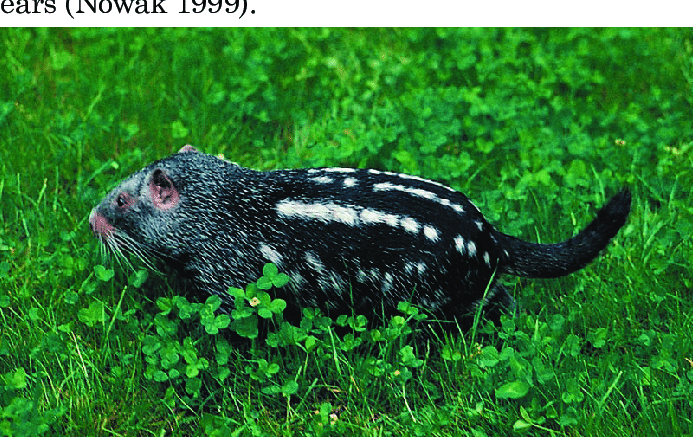https://noticviralweb.blogspot.com/2018/02/pacarana-duchandose.html

Ever wondered about the lesser-known creatures that inhabit our world? Today, we’re diving into the life of the https://noticviralweb.blogspot.com/2018/02/pacarana-duchandose.html, a unique rodent that’s as fascinating as it is rare. Understanding species like the pacarana not only enriches our knowledge of biodiversity but also underscores the importance of conservation efforts. So, let’s get started!
What is a Pacarana?
The pacarana, scientifically known as Dinomys branickii, belongs to the family Dinomyidae. It’s one of the few remaining members of this ancient rodent family. Physically, pacaranas are quite distinct—they can weigh up to 15 kg (33 lbs) and have a robust body with a short, furry tail. Their fur is usually dark brown or black with white stripes and spots, giving them a striking appearance.
Habitat and Distribution
https://noticviralweb.blogspot.com/2018/02/pacarana-duchandose.html are native to South America, primarily found in the tropical forests of the Amazon Basin, extending into Colombia, Venezuela, Peru, and Brazil. These rodents prefer dense, humid forests where they can easily hide and find food.
Behavior and Lifestyle
Despite their size, pacaranas are relatively shy and elusive. They are nocturnal creatures, meaning they are most active during the night. Pacaranas are known for their gentle and slow movements, which contrast sharply with the more frantic behavior of many other rodent species.
Diet and Feeding Habits
Pacaranas are herbivores. Their diet consists mainly of fruits, leaves, stems, and other plant materials. They have strong teeth that allow them to gnaw on tough vegetation. Feeding is primarily a nocturnal activity, and they are often seen foraging on the forest floor under the cover of darkness.
Reproduction and Lifespan
https://noticviralweb.blogspot.com/2018/02/pacarana-duchandose.html have a relatively low reproductive rate. They usually give birth to one or two offspring after a gestation period of about 223 days. These young pacaranas are born well-developed, with their eyes open and a full coat of fur. In the wild, pacaranas can live up to 12 years, though this can vary depending on environmental conditions and predation.
Pacarana’s Unique Adaptations
One of the pacarana’s most notable adaptations is its ability to remain motionless for extended periods, blending into its surroundings to avoid predators. Additionally, their strong claws and teeth are perfect for digging and breaking down tough plant matter, essential for their survival in dense forests.
The Pacarana in Popular Culture
While not as famous as some other exotic animals, the pacarana has made appearances in various forms of media. Documentaries about South American wildlife often feature these unique rodents, highlighting their peculiar behaviors and rarity. Their mysterious nature and elusive presence make them a subject of intrigue and fascination.
Threats and Conservation Status
https://noticviralweb.blogspot.com/2018/02/pacarana-duchandose.html face several threats, primarily from habitat destruction due to deforestation and human encroachment. They also have natural predators, including large birds of prey and carnivorous mammals. Currently, pacaranas are listed as “Vulnerable” on the IUCN Red List, prompting various conservation efforts to protect their dwindling populations.
Research and Studies
Ongoing research is crucial for understanding the pacarana’s biology and ecological role. Recent studies have focused on their behavioral patterns, dietary needs, and reproductive habits. This research is vital for developing effective conservation strategies to ensure their survival.
Interaction with Humans
Although pacaranas are not commonly seen by humans due to their nocturnal and reclusive nature, encounters do happen, especially in areas where their habitat overlaps with human settlements. Local communities sometimes regard them with a mix of curiosity and respect, recognizing their unique place in the ecosystem.
Pacarana as Pets
While it might be tempting to consider a pacarana as a pet due to their unique appearance and gentle nature, it’s important to remember that they are wild animals. Keeping a pacarana as a pet is not advisable due to their specific habitat and dietary needs, and it is often illegal to do so.
Interesting Facts About Pacarana
- Pacaranas are one of the world’s largest rodents, second only to the capybara.
- They are excellent climbers, often using their strong limbs and claws to navigate through trees.
- Despite their size, pacaranas can remain incredibly still, making them difficult to spot in the wild.
- They communicate with a variety of sounds, including grunts and whistles.
- The name “pacarana” comes from the Tupi language, meaning “false paca,” due to their resemblance to another rodent called the paca.
The Pacarana’s Role in the Ecosystem
https://noticviralweb.blogspot.com/2018/02/pacarana-duchandose.html play a crucial role in their ecosystem as both herbivores and prey. By feeding on various plants, they help in seed dispersal and maintaining the health of the forest. As prey, they are an important food source for larger predators, contributing to the balance of the food chain.
Conclusion
The https://noticviralweb.blogspot.com/2018/02/pacarana-duchandose.html is a remarkable rodent with a unique blend of characteristics that make it stand out in the animal kingdom. From its impressive size to its nocturnal habits, every aspect of the pacarana is fascinating. Understanding and protecting these creatures is essential for maintaining biodiversity and the health of our ecosystems.
FAQs
- What is the scientific name of the pacarana?
- The scientific name of the pacarana is Dinomys branickii.
- Where can pacaranas be found?
- Pacaranas are primarily found in the tropical forests of the Amazon Basin, extending into Colombia, Venezuela, Peru, and Brazil.
- Are pacaranas dangerous to humans?
- No, pacaranas are not dangerous to humans. They are shy and reclusive creatures that prefer to avoid human contact.
- Can pacaranas be kept as pets?
- Keeping a pacarana as a pet is not advisable due to their specific habitat and dietary needs, and it is often illegal to do so.
- What do pacaranas eat?
- Pacaranas are herbivores, primarily eating fruits, leaves, stems, and other plant materials.


